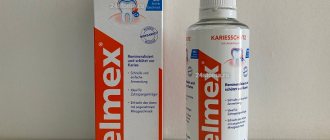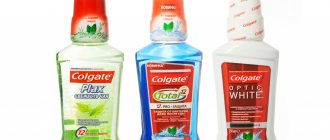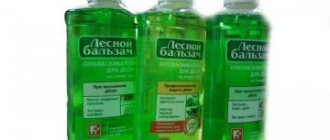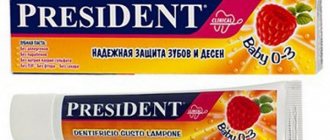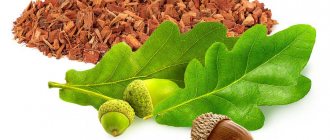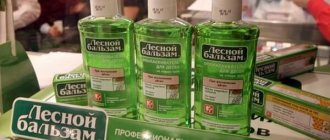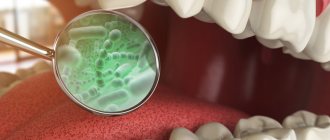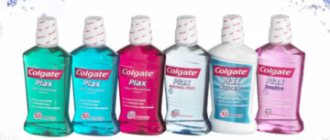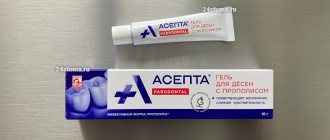Causes of bleeding gums
If you are interested in the mechanism of how poor hygiene and gum inflammation lead to bleeding, it looks like this.
Plaque and tartar bacteria produce a large number of toxins and various pathogens that trigger a chain of inflammatory reactions in the gums. In particular, this leads to increased permeability and fragility of capillaries (which is due to the fact that blood appears precisely when brushing teeth), as well as to swelling, redness or cyanosis of the gingival papillae. In parallel with this, the process of desquamation (squamation) of epithelial cells of the gum mucosa intensifies, which leads to thinning of the epithelium. The latter further reduces the resistance of gums weakened by inflammation to mechanical stress, for example, when brushing teeth or chewing hard food. Therefore, when together: 1) fragility and increased permeability of capillaries, 2) thinning of the epithelium + 3) even completely normal mechanical stress, it ends in bleeding when brushing your teeth.
By the way, a very common symptom that accompanies bleeding gums is pain when brushing your teeth. The mechanism of its development is also associated with thinning of the epithelium of the gum mucosa and a decrease in the latter’s resistance to mechanical stress. And the conclusion that needs to be drawn from all of the above is that treatment should not be tied to the fight against a separate symptom of bleeding; it should consist in eliminating the main cause of gum inflammation, i.e. removal of microbial plaque and tartar.
Factors predisposing to bleeding gums
If this is not the first time that you have experienced bleeding, this indicates that your gum inflammation is chronic and has been going on for quite a long time. In this case, when brushing your teeth, blood may appear and then disappear again (24stoma.ru). Typically, gums bleed only during exacerbations of chronic inflammation. Exacerbation of the inflammatory process most often occurs in the off-season and is associated with a decrease in immunity or the development of vitamin deficiency.
But we don’t want you to think that poor immunity or vitamin deficiency are the causes of exacerbations of gum inflammation and bleeding. The cause is still plaque bacteria. It’s just that local protective factors in the oral cavity (against the background of decreased immunity) no longer cope with the previous volume of toxins and pathogens released by microbial plaque on your teeth. Other predisposing factors may include mouth breathing and xerostomia, which contribute to an increase in the amount of plaque in the mouth.
Rinse aid “kills” the effect of active toothpaste.
The one that contains active substances designed to treat and protect your teeth and gums. You paid money for them, and then neutralized all the active components with your own hands. How? Yes, just immediately after brushing your teeth, they rinsed them with a harmful product. So to speak, they burned everything and everyone.
Remember that the people most susceptible to tooth decay are those whose mouths have minimal (or no) beneficial bacteria in their mouths and are as dry as the desert. And no, it’s not enough to just drink cool, clean water. We are talking about saliva, which contains all the necessary minerals to strengthen the enamel. It is saliva that is the natural enemy of caries. What if she doesn't exist? It's like leaving a military base without guards overnight, right?
What diseases are bleeding gums a symptom of?
Bleeding gums can be either an independent disease or a symptom of another. There are three oral diseases that can lead to bleeding:
- Periodontal disease. With periodontal disease, it is not so much the gums that are damaged as the soft tissue around them. Due to the damage to these tissues, which dentists call periodontium, there is an increase in the amount of plaque on the teeth, which leads to microtrauma of the gums. With periodontal disease, tooth pockets do not form, and the gums themselves become inflamed quite rarely.
- Periodontitis. With periodontitis, both the gums and the soft tissue around them are damaged. The disease progresses very quickly. If left untreated, symptoms such as gradual destruction of the alveolar process, inflammation of the gums and soft tissues, formation of dental pockets (which often fester), and so on are observed. Periodontitis is relatively common.
- Gingivitis. Gingivitis causes damage to the gums. If gingivitis is not treated, it evolves into periodontitis.
So what should I do?
The main rule is not to use oral hygiene products on the advice of friends or by buying into bright and promising advertising. Before buying a mouthwash, consult your dentist. Now on the market you can find many safer and healthier solutions that will really help in home care, and will not draw a guiding arrow towards the dental clinic.
And yes, a more profitable and useful alternative to mouthwash is an irrigator. It will last a long time, get rid of stuck food particles and wash away plaque without disturbing the beneficial microflora.
What to do if your gums bleed: treatment
If your gums bleed when brushing your teeth, treatment should be carried out by a periodontist (these doctors do not specialize in the treatment of gums). The most important thing to do at the first stage of treatment is to remove the causative factor in the development of gum inflammation, i.e. carry out ultrasonic cleaning of teeth from microbial plaque and tartar. This can only be done by a dentist. But the course of anti-inflammatory therapy following the cleansing can be carried out at home.
Dry mouth
Yes, this is also a reality - mouthwashes (especially those containing alcohol, chlorhexidine or other antiseptic) can cause the formation of a real Sahara desert in your mouth.
But it is in a dry environment that harmful bacteria feel best; beneficial microorganisms cannot tolerate such conditions and die. And we have known for a long time that a dry mucosal surface leads to serious problems with teeth and provokes the appearance and development of carious areas. Without saliva in sufficient quantities, there is no complete protection against caries!
Treatment at the dentist's office
Treatment of bleeding gums when brushing teeth includes removing plaque from enamel and tartar and rinsing deep periodontal pockets for periodontitis and periodontal disease. These manipulations are carried out by a specialist in the clinic’s office.
To remove dental plaque, ultrasonic cleaning is used, less often - the use of instruments and mechanical cleaning of the enamel. The number of sessions required depends on the complexity of the work and the amount of deposits.
Washing of periodontal pockets is carried out in chronic forms of periodontitis and periodontal disease. It helps remove pathogenic microbes, their waste products, pus and exudate. The solutions used have antibacterial, antimicrobial and anti-inflammatory effects.
Gels and toothpastes for bleeding
You should choose a toothpaste based on what is causing your gums to bleed. The composition may contain different components: potassium chloride, sodium sulfate, vitamins, medicinal plants, etc.
The most effective and popular means to solve the problem:
- SPLAT Professional Active is a Russian toothpaste, its distinctive feature is its black color. It has several actions at once - antiseptic, hemostatic. The main components included in the composition are skullcap, spirulina extract, and bergenia extract.
- Lacalut Activ is a whole complex that includes a toothbrush, toothpaste and mouthwash. Aluminum cations are used as a basis.
- Parodontax Classic – contains extracts of medicinal herbs. The pasta is produced not in our country, but in the UK.
- Forest balsam is another domestic product that contains many components of plant origin. There is sea buckthorn essential oil, St. John's wort, chamomile and more.
Recommended toothpaste for treatment
Dental gels are no less effective. It is recommended to use Cholisal, Parodium, Solcoseryl, Metrogil Dent, etc.
Interesting!
It is recommended to change toothpastes periodically, this way you can achieve comprehensive care.
Whitening pastes should never be used for bleeding gums. The thing is that they can irritate the gums, thereby further aggravating the situation. In the video in this article you can learn in more detail about which toothpastes and gels are useful for this problem.
What does it contain?
“Forest Balsam” has won over its consumers thanks to its natural composition .
It contains the following active substances:
- Calendula extract . Relieves pain and reduces sensitivity when the enamel is thinning.
- Oak bark. Stops bleeding gums, has a disinfectant and antimicrobial effect on the oral cavity.
- Sea buckthorn extract . Relieves toothache, accelerates regenerative processes.
- Lingonberry and raspberry extract . They have antioxidant properties.
- Nettle extract . Saturates mucous membranes with important microelements. Maintains local immunity at an optimally high level.
- Propolis. Has a pronounced disinfectant effect. Eliminates pathogenic bacteria that cause bad breath.
The rinse aid also contains chemicals necessary to enhance the properties of the main components and extend shelf life.
Antiseptics for rinsing
Mouth rinse
To rinse the mouth, you should take products with antibacterial and anti-inflammatory effects. In order to enhance overall healing, they are usually used as a supplement.
So, what do dentists recommend:
- Miramistin 0.01%. The drug is especially effective for herpes infections, has a calming and antimicrobial effect.
- Stomatophyte – contains medicinal herbs and alcohol. Recommended for use in the development of gingivitis and periodontal disease.
- Polyminerol – stops bleeding, accelerates regeneration processes.
- Chlorhexidine, concentration not more than 0.05%. This is an antibacterial agent used for inflammatory processes. In addition, dentists recommend rinsing your mouth with it after tooth extraction.
- Chlorophyllipt is based on an extract of eucalyptus leaves. It is prescribed when the oral cavity is affected by pathogenic staphylococci.
- Maraslavin. Contains wormwood herb, savory, black pepper. Helps relieve pain, eliminates allergy symptoms.
- Periodonticide. It contains a large number of medicinal herbs, due to this it has a good anti-inflammatory effect.
To achieve the desired result, rinses should be used in a course. Moreover, one product cannot be used for more than a month. The thing is that many bacteria can develop resistance.
Choosing the best mouthwash for teeth and gums
Modern rinses are available in the form of ready-made solutions, liquid concentrates, or in the form of powders that must be diluted with water. They can be hygienic for refreshing the oral cavity and therapeutic and prophylactic against caries, inflammation, bleeding gums and for strengthening tooth enamel.
For daily use, you should choose a liquid without an antibacterial component in the composition. A gum rinse with an antibacterial component (triclosan, chlorhexidine) helps with acute inflammation (ulcers, gum inflammation, aphthae). But it is worth considering that it cannot be used for more than 7 days in a row, because the native microflora of the oral cavity begins to die, it is replaced by pathogenic bacteria that produce resistance factors to triclosan and chlorhexidine, and become the enemy of your body. Dry mucous membranes and increased tissue irritability may appear.
You also need to pay attention to the fluoride content: with a content of no more than 0.05%, the liquid can be used daily without harm. If the fluoride concentration is 0.2% or higher, dentists advise using this rinse no more than 1-2 times a week.
The product for sensitive teeth that react to cold and hot should not contain alcohol. Ethyl alcohol can negatively affect the condition of the oral mucosa. Motorists should also note that such a mouthwash can give a positive result on a breathalyzer, although the normal level of ethyl alcohol in the breath returns within 10 minutes after rinsing the mouth.
It is worth saying that the color of the liquid does not affect the change in the color of tooth enamel, that is, staining does not occur even after prolonged use of the mouthwash. Therefore, when choosing a rinse aid, you do not need to focus on the color of the solution.
When choosing an oral fluid, pay attention to criteria such as:
- clinically proven effectiveness;
- products are approved by the Russian Dental Association.
For example, Asepta® brand mouth rinses meet these criteria. The line of products includes two combined-action rinses - the hygienic Asepta® Fresh and the therapeutic and preventive Asepta® Active.
Mouthwash "Asepta® Active" is intended for use in infectious and inflammatory diseases of the oral cavity. It has an antibacterial effect, relieves inflammation and bleeding of gums due to gingivitis and periodontitis, prevents the formation of dental plaque and freshens breath. The liquid also has an analgesic effect, since it contains an analgesic - benzydamine, therefore it is indicated for toothache.
Asepta® Fresh mouthwash does not contain alcohol or antiseptics and is recommended for daily preventive protection and maintaining healthy gums and teeth. The product reduces the increased sensitivity of teeth and gums, prevents the formation of tartar and caries.
Mouthwash for bleeding gums
When bleeding gums, rinses with plant extracts help well. Extracts of plants such as chamomile, sage, lemon balm, St. John's wort, oak bark have a pronounced healing effect, help cope with bleeding and strengthen gums, and have a wound healing effect. Chamomile improves blood circulation and has a positive effect on blood vessels, preventing bleeding.
Plant extracts also help achieve fresh breath.
Mouthwash for gum inflammation
Anti-inflammatory rinses contain components such as plant essential oils, antiseptics, and antioxidants. Chlorhexidine is a broad-spectrum antiseptic, most often used in anti-inflammatory rinses. As mentioned above, the course of use of such rinses is limited and must be agreed with a doctor so as not to upset the balance of the oral microflora.
The rinse may also contain betamethasone as an anti-inflammatory component.
Mouthwash against caries
Anti-caries agents contain minerals (fluorine, calcium), which are aimed at strengthening tooth enamel and preventing caries. Fluoride rinses are suitable for daily use as long as the fluoride concentration is low. The British Dental Association recommends the use of fluoridated rinses as an addition to brushing with fluoridated toothpastes, which provide a higher level of protection than using toothpaste alone.
How to use mouthwash for oral hygiene?
Rinsing with mouthwash should be done at least twice a day, after brushing and flossing your teeth. It is recommended to use the rinse also after meals during the day as an independent means of oral hygiene.
Many mouthwash bottles have a special dispenser cap that holds approximately 4 teaspoons of product, which is equal to 20 g of liquid. If there is no measuring cap, a dose equivalent to 20 g of liquid is used.
To achieve the effect, you need to rinse your mouth with the liquid for at least 20 seconds. Dentists recommend rinsing your mouth dynamically, as if filtering the liquid through your teeth. The liquid is then spat out. After the procedure, it is advisable to refrain from eating and drinking for half an hour to allow the healing, antiseptic and mineralizing components to take effect.
Rinse aids are not intended to be diluted with water or mixed with other products.
If you experience a burning sensation in your mucous membranes when using a mouthwash, you should choose another oral hygiene product.
Let's summarize: using mouthwash for daily oral hygiene is not only possible, but also necessary. For daily use, a product without an antibacterial component and with a low fluoride content is suitable. By regularly using mouth rinse as the final stage of hygiene, you will ensure reliable protection of your teeth from plaque and caries, and gums from inflammatory diseases, and avoid bad breath.
May your teeth be healthy!
Folk remedies for bleeding gums
After consulting with your doctor, you can also use some traditional medicine that eliminate existing bleeding no worse than medications.
1. Oak bark. This is one of the simplest and at the same time effective means of treating bleeding gums. This bark is rich in tannins, which strengthen the gums and prevent their bleeding. For treatment, just take 1 tbsp. crushed oak bark, pour 100 ml of boiling water and put on fire. Keep the product on the fire for 7 minutes, then remove and let it cool. Rinse your mouth with this medicine 2 times a day.
2. Chamomile. This flower boasts excellent anti-inflammatory properties, which eliminates the cause of gingival bleeding caused by the inflammatory process. Take 1 tbsp. chamomile flowers and load into a thermos. Fill the healing plant with 250 ml of boiling water, close the lid of the thermos and leave the product for 4 hours. Let it cool, and then strain the medicine and you can rinse your mouth with it after meals 3 times a day.
3. Sage. Another natural remedy that is extremely beneficial for oral health is sage. To get rid of bleeding gums you will need to take 2 tbsp. dry sage leaves and irritate them with 400 ml of boiling water. Leave the finished mixture to infuse for half an hour, then strain and rinse your mouth with the mixture twice a day, morning and evening.
Let us only add that the considered folk remedies should not be the only medicines in the fight against bleeding gums. They can only be used in combination with medications prescribed by a doctor.
How can diet help treat gums?
If your gums bleed when brushing your teeth, treatment should begin immediately. In addition to drug therapy, it is important to maintain proper nutrition. The patient needs to reduce the consumption of sugar and fatty foods. Regardless of age, it is important to get enough vitamins. Doctors recommend including in your diet: vegetables, fruits, fish, cheeses, cottage cheese. The dentist may prescribe a multivitamin supplement.
For treatment to be effective, you cannot exclude from your diet food containing calcium, phosphorus, and vitamins: C, E, B1 and B2. These components strengthen teeth and soft gum tissue. It is forbidden to eat spicy, sour foods. It irritates the mucous membrane. You should also not eat crackers, caramel, nuts, etc. When chewed, these products can injure the gums, after which bacteria will enter the wounds and the inflammatory process will begin.
In addition, doctors urge you to stop smoking and drinking alcohol.
